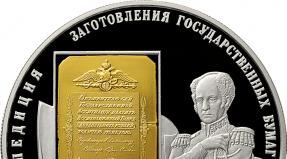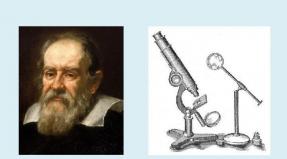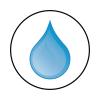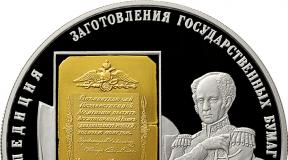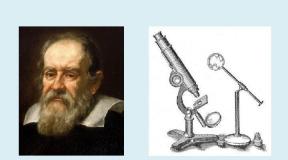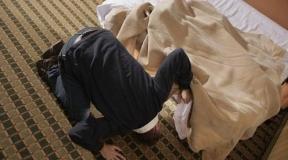Population migration indicators. Concept and indicators of population Mechanical population growth
In a simplified way, the concept of “migration” is deciphered as a change of place of residence (moving).
The phenomenon of migration is one of the key concepts of the demographic process, since the functioning of the state is directly dependent on this action. Migration affects the population of a state, determining its economic situation.
The concept of migration growth is designated in demography as the difference between those who arrive in a country (region, territory) for permanent residence and those who permanently leave it.
The migration process is classified according to several criteria:
- size;
- form;
- cause;
- character;
- time parameter;
- legal status.
Migration growth formula
To calculate migration growth, several coefficients may be required:
- the number of people arriving in any region (P);
- number of people who left the region (B),
- net (balance) migration (MS).
The formula for migration growth is the difference between people who arrived and those who left the corresponding territory:
MS=P-V.
The migration growth formula can give both positive and negative results. If the resulting total is less than zero, then we can talk about “migration loss.” To get the opposite result, you need a positive number.
There is a second way to calculate migration growth in the case when the total and natural increase is known. Mechanical growth is obtained by subtracting natural growth from total growth.
Relative indicator values can be calculated for certain population groups. For example, the number of visitors is divided by a certain number of local residents (often per thousand). The formula for migration growth in this case is as follows:
KP=(P/N)*1000.
KP – arrival coefficient,
P number of visitors,
N – number of local residents.
To obtain more accurate statistical indicators, average values are calculated over several years, which makes it possible to analyze the current situation, determine immigration policy and manage labor resources.
Types of migration
Depending on the type of migration, the features of migration growth will also differ:
- Episodic migration (leisure travel, tourism, business) has no time frame or direction. Migration is not subject to control and is poorly studied.
- Commuting migration is caused by the population’s need for constant travel (for example, daily trips to work or school). This type of movement does not have a significant impact on migration growth, unless a person decides to change his place of residence.
- Seasonal migration, due to which the labor shortage is filled, production needs are met.
- Irreversible migration, on which the magnitude of migration growth most depends. It represents a permanent move or a complete change of residence.
Examples of problem solving
EXAMPLE 1
EXAMPLE 2
| Exercise | Based on regional data for the reporting period, it is necessary to find the average annual population and mechanical population growth. Population (beginning of the year) – 950 people, Population (end of year) – 1,112 people, Born - 10 people, Died - 5 people. |
| Solution | Let's calculate the average annual population by adding up the indicators at the beginning and end of the year and dividing the sum by two: Count=(950+1112)/2=1031 people. Mechanical growth makes up the difference between total and natural growth. OP=1112-950=162 people EP=10-5=5 people MP=162-5=157 people. Let's calculate the mechanical growth coefficient using the formula KMP=(P/N)*1000 KMP = (157/1031)*1000=152.28% |
| Answer | Account = 1031 people, MP = 157 people, KMP = 152.28% |
Topic 1: Population statistics
№27 p.15
The following data are available for the region for 2000:
Number of deaths, people............7680
Number of people leaving for permanent residence in other settlements, people......2000
Vitality coefficient................................................... ...........................................1.26
Share of women in the total population, ..................................................% 57.8 (d f)
Share of women aged 15-49 years in the total number of women,.........% 35.9 (d f 15-49)
Determine: 1) fertility, mortality, natural and mechanical population growth rates; 2) number of births; 3) the number of those who arrived for permanent residence from other localities; 4) special birth rate.
1) Vitality rate = Birth rate / Mortality rate.
Fertility rate: ; 
Death rate: 
Natural increase rate:
Mechanical gain coefficient: 
2) Number of births:
3) We will find the number of arrivals from here (P):
4) Special birth rate: 
№36 p.17
The following data is available:
Number of person-years to live from age 5 to
age limit (T 5)................................................... ............6 467 145
Average number of people living at age 5 (L 5)..................................97 775
Number of people surviving up to 5 years (l 5)................................................. ...................98,805
Fill in the line of the life table for age 5 years.
Determine the average life expectancy for persons who have reached the age of 6 years (e 6 0).
|
|
|
|
||||
px - probability of surviving to the next age for persons who have reached X years qx + px = 1
26) The following data are available for 2000 for the region:
Population, thousand people:
at the beginning of the year (S t) 1420
at the end of the year (S t + n) 1473
Coefficient of natural population growth, % 2.9
Life coefficient (N/M) 1.26
Number of children who died under the age of one year, people 395
Share of women aged 15-49 years in the total population, %:
at the beginning of the year 31
at the end of the year 33
Characterize the natural and migration movement of the population of the region in 2000 using absolute and relative indicators known to you.
1) Average population in 2000: Ŝ=(S t + n + S t)/2
2) Number of births – number of deaths: N-M=(K natural pr. *Ŝ)/1000‰ → N=4195+M
3) N=1.26*M → 0.26M=4195 → M=16134; N=20329
4) General fertility rate: To r.tot. =(N/Ŝ)*1000‰
5) Overall mortality rate: K see total. =(M/Ŝ)*1000‰
6) Absolute migration increase: ∆S fur =П–В=S t + n -S t -(N-M)
7) Migration gain coefficient: K mech.pr. =((P–V)/Ŝ)*1000‰
8) Coefficient total. growth: To general pr. =To mech.pr. +K natural pr. or =((S t + n -S t)/Ŝ)*1000‰
9) Child mortality rate = (395/N)*1000‰
10) S female beginning =0.31* S t ; S female con. =0.33* S t + n ; S = (S female beginning + S female end)/2
11) d female 15-49 =(0.31+0.33)/2
12) Special fertility rate = (N/S f) * 1000‰ or = K r.tot. /d female 15-49
35) There are the following data on the number of women as of 01/01/2000 in the locality and survival rates (from the table of mortality and average life expectancy → first 3 columns).
Determine the expected number of women aged 29 and 30 years as of 01/01/2002 without taking into account migration → last. 2 columns.
|
Age, years |
Number of women, people |
Survival rate |
Number wives 01/01/2001 |
Number wives 01/01/2002 |
|
3260*0,99928=3258 |
||||
|
4080*0,99925=4077 |
3258*0,99925=3255 |
|||
|
4077*0,99923=4074 |
||||
Asgeneral vital statistics highlight:
1) Total fertility rate-- shows the number of births per year per 1 thousand people of the average annual population:
 .
.
2) Overall mortality rate-- shows the number of deaths per year per 1 thousand people of the average annual population:
 .
.
3) Natural increase rate-- the difference between the number of births and deaths per 1 thousand people of the average annual population:
4) Vitality factor-- ratio between birth rate and death rate:
 .
.
For example, private mortality rate is calculated by dividing the number of deaths for the corresponding year in the corresponding group by the average annual population in this group:
 , Where
, Where  -- age or age interval.
-- age or age interval.
Otherwise calculated infant mortality rate(applies to children under 1 year of age):
Method I:  ;
;
Method II:  ,
,
Where  -- number of births in the current year,
-- number of births in the current year,  -- number of births last year.
-- number of births last year.
Partial coefficients include special birth rate:
There is a relationship between the special coefficient and the general one:
 .
.
There is a relationship between general and private coefficients. The overall coefficient can be represented as the arithmetic mean of the partial coefficients of groups weighted by size:
 , Where
, Where  -- partial coefficient, and
-- partial coefficient, and  -- number.
-- number.
Mechanical movement of population-- this is a change in numbers due to territorial movement (migration). Migration can be internal and external, seasonal and pendulum. Migration is characterized by absolute indicators:
number of arrivals (  );
);
number of people leaving (  );
);
· absolute mechanical gain ().
To characterize the intensity of mechanical movement, relative indicators are calculated:
1) Arrival rate:
 .
.
2) Attrition rate:
3) Mechanical gain coefficient:
To characterize changes in numbers, total growth rates are calculated:
I.  ;
;
II.  ;
;
TOPIC 2. STATISTICS OF EAN, EMPLOYMENT, UNEMPLOYMENT AND LABOR. RESOURCES
19. Number of employed in the city as of January 1. 2000 amounted to 352 thousand people, as of April 1, 2000 - 354 thousand people, as of June 1, 2000 - 368 thousand people, as of October 1, 2000 - 358 thousand people, on January 1, 2001 - 360 thousand people. The number of unemployed on the corresponding dates was: 39 thousand people, 40 thousand people, 32 thousand people, 35.4 thousand people, 40 thousand people.
Determine: 1) the average number of employed, unemployed, EAN for 2000; 2) employment and unemployment rates for this period.
1) W=(((352+354)/2)*3+((354+368)/2)*2+((368+358)/2)*4+((358+360)/2) *3)/12=359.2
B=36.5 (calculated similarly)
EAN=B+Z=395.7
2) Кз=(Sз/Sеа)*100%=(359.2/395.7)*100%=90.8%
Kb=(Sb/Sea)*100%=9.2%
25. 85 thousand people live in the city. under the age of 16 years (S 0-15), men aged 16 to 59 years - 75 thousand people. (S M), women aged 16 to 54 years - 83 thousand people. (Sw) and 38 thousand people. in post-working age (Spw). The number of non-working disabled people of groups I and II of working age and non-working pensioners of working age is 1% of the total number of people of working age (S T /100). It is known that in the city 150 thousand residents are working (Sz), of which 146 thousand people. are of working age (S TT).
Determine: 1) the share of the population of working age; 2) coefficients of “pension burden”, potential replacement and total burden of the working-age population; 3) the number of labor resources; 4) coefficient of working capacity of the population of working age; 5) the employment rate of the working-age population.
S T =S M +Sw=158 thousand people; S=S 0-15 +S M +Sw+Spv=281 thousand people.
1) (S T /S)*100%=56.2%
2) Kpn=(Spv/S T)*1000‰=240.5‰
Kzam=(S 0-15 /S T)*1000‰=538‰
Kon=Kzam+Kpn=778.5‰
3) Str=Stt+work. pension + work young people=146+0.01*158=147.58 thousand people
4) K = S TT \ S T .
5) K = S T \ Sz.
33. The company has data (table) on the number of employees for August.
Weekends and holidays: 1, 7, 8, 14, 15, 21, 22, 28, 29.
Determine the MSS, SCN and the average number of people actually working for August.
Calculate the utilization coefficient of the SSC.
|
Day of the month |
Consisted of a list every day |
Showed up to work every day |
Number of full-day downtimes per day |
|
from 2nd to 4th |
|||
|
from 5th to 6th |
|||
|
from 9th to 11th |
|||
|
from 12th to 13th |
|||
|
from 16th to 20th |
|||
|
from 23rd to 24th |
|||
|
from 25th to 27th |
|||
|
from 30th to 31st |
|||
1) MSS=(200*4+205*4+210*3+ 208 *4+207*7+212*2+220*5+222*2)/31=210 people.
2) SYCH=(200*3+205*2+205*3+ 206 *2+204*5+208*2+216*3+220*2)/22=210 people.
3) SCHFRL=(200*3+205*2+205*3+ 176 *2+204*5+208*2+216*3+220*2)/22= 209 people.
4) SSCH utilization coefficient = (SSFRL/SSCH) * 100% = 99.5%.
37. The following data is available for the company for September:
Hours worked, person-days 3490
All-day downtime, person-days 10
Absences on working days, person-days 40
Absences over weekends, person-days …………..1260
Number of working days 22
Determine the SCH and SCN of workers in September.
1) MSS=(3490+10+40+1260)/30
2) SYCH=(3490+10)/22
Economically active population– part of the country’s population that provides labor supply (employed + unemployed). Employed – having an occupation that generates income. Unemployed - over 16 years of age, have not had a job recently, were looking for one, and were ready to start work. Economically inactive population – unemployed and not looking for work (children, housewives, students and other persons).
Population working capacity coefficient – the share of the working population in the total number.
The working-age population working-age coefficient is the share of the working-age population in the working-age population.
The employment rate of the total population is the share of employed people in the total population.
Employment rate of the working age population.
The total workload coefficient is the number of people of disabled age per 1000 people of working age.
Labor force replacement rate is the number of children and adolescents per 1000 people of working age.
The pension burden ratio is the number of pensioners per 1000 people of working age.
The unemployment rate is the share of unemployed among the economically active.
Economic activity rate is the share of economically active people among the total population.
Topic 3: Statistics on the use of working time
№14 p.41
When studying the time resources of workers at the enterprise, the following data were obtained for two months:
March: maximum possible working time - 2680 person-days; total absences - 1122 person-days, including due to weekends - 960 person-days, regular holidays - 80 person-days; all-day downtime - 40 person-days; worked by workers - 19,158 man-hours; number of working days - 23;
April: turnout - 2564 person-days. (there were no all-day downtimes); total no-shows - 1186 person-days; including in connection with weekends - 1000 person-days, regular holidays - 90 person-days; worked by workers - 19,747 man-hours.
Determine for each month:
1) the average number of workers; 2) the average actual duration of the working period; 3) the average actual duration of the working day. Analyze the change in the fund of hours worked (in person-hours) under the influence of various factors.
1)
 ;
;

2) average fact duration of work. period (B):
March: ; April: 
3) average fact duration of work. day (A):
March: ; April: 
4) Factor analysis of FOV:
Due to change SSCh (S):
Due to change fact continued slave period (B):
Due to change fact continued work of the day (A):
The following data are available for the enterprise for April: workers worked - 8,000 man-days; all-day downtime - 50 person-days; total absences - 3950 person-days, including due to weekends - 3200 person-days; regular vacations - 240 person-days. There are 22 working days in April.
Determine: 1) calendar, time and maximum possible working time funds; 2) SSCH and SYCH workers; 3) the average number of days of absence in the maximum possible working time fund per one payroll worker.
1) CF=8000+50+3950=12000; TF=KF-3200=8800; IMF=TF-240=8560
2) SSCH=KF/30=400; SYCH=8050/22=366
3) =(8560-8050)/400=1,275
12. During the month, the number of man-days worked in the workshop was: in the first shift - 990; in the second - 880; in the third - 440. The number of jobs in the workshop is 50, the number of working days in a month is 22.
Define: 1) coefficients of shifts, use of shift mode, continuity and integral coefficient of workplace utilization; 2) reserves of working time due to underutilization of workplaces; 3) an increase in the volume of production that can be obtained as a result of increasing the efficiency of using jobs if the shift ratio of workers is increased to 2.5 (the average output per shift by one worker is 220 rubles).
1)


working time reserves: (person-days), provided that the coefficient. Shift is 3.
3) Increase in production volume as a result of increased efficiency in the use of jobs
Topic 4: Labor productivity statistics:
№16 p.48
There is data on the enterprise
|
Product type |
Products produced, tons |
Labor costs per 1 ton, person-hour |
||
|
base period ( t 0) |
reporting period ( t 1) |
base period ( ω 0 ) |
reporting period ( ω 1) |
|
Determine: 1) the dynamics of labor productivity for each type of product; 2) general indices of labor productivity and labor intensity of products; 3) savings in working time in the production of each type of product and for two types of products in general, obtained as a result of increased labor productivity.
1) Dynamics of labor productivity:; 
2) General labor productivity index: 
General product labor intensity index: 
3) Saving working time separately:
Overall working time savings:
w = q / T ; t = T / q ; w =1/ t ; PT= Q /T person-day (by production); PT=T person-day / Q (by labor intensity, labor costs)
7. The following information is known about the company:
In the reporting year, the index of the average actual duration of the working day was 0.95, and the index of the average actual duration of the working year (in days) was 0.98.
Determine the indices of average hourly, average daily and average annual labor productivity.
1) iw day =w day1 /w day0 =(Q 1 /T 1)/(Q 0 /T 0)=(21000/240)/(20000/250)=87.5/80=1.094
2)iw h =w h1 /w h0 =(w day1 /average actual length of working day1)/(w day0 /average actual duration of working day0)=w day1 /(w day0 * 0.95)=1.151
3) iw g =w g1 /w g0 =(w dn1 /w dn0)*0.98=1.071
17. There is data on the production of clothing and labor costs for sewing. factory in two months:
|
Product type |
Product output, pcs. |
Actual working time costs on average per 1 piece, person-hour |
||
|
September (q0) |
October (q1) |
September (t0) |
October (t1) |
|
|
1) Demi-season coat 3) Women's suit |
||||
Determine: 1) individual labor productivity indices; 2) general index of labor production: a) arithmetic average; b) aggregate; 3) savings in working time resulting from an increase in labor productivity for the enterprise as a whole.
1) i w =w 1 /w 0 =t 0 /t 1 → find for 1, 2, 3
2) a) I w =Σi w T 1 /ΣT 1 =Σi w q 1 t 1 /Σq 1 t 1 =…=1.022 (+2.2%), i.e. labor production for 3 types of products in October compared to from September enlarge by 2.2%
b) I w =Σt 0 q 1 /Σt 1 q 1 =Σi w q 1 t 1 /Σq 1 t 1 , i.e. here is the same as in 2a)
3) E w =numerator I t -denominator I t =denominator I w -numerator I w =Σt 1 q 1 -Σt 0 q 1 =ΣT 1 -Σi w T 1 =-91 person-hour, i.e. as a result of the growth in labor production by enterprise. in general by 2.2% received. economy working time 91 person-hours
21. Data on the work of the enterprise:
|
Product type |
time per piece according to the norm, person-hour. (tn) |
||||
|
products produced, pcs. (q0) |
total working time costs, man-hours (T0) |
products produced, pcs. (q1) |
total working time costs, person-hour (T1) |
||
Determine: 1) index of labor production using the labor method; 2) aggregate index of labor production; 3) labor intensity index; 4) savings (additional costs) of labor due to changes in labor intensity in the reporting period compared to the base period.
I w =w 1 /w 0 =(Q 1 /T 1)/(Q 0 /T 0)=(Σq 1 t n /ΣT 1)/(Σq 0 t n /ΣT 0)=…=0.976
I w =Σt 0 q 1 /Σt 1 q 1 =Σ((T 0 /q 0)*q 1)/Σ((T 1 /q 1)*q 1)= Σ((T 0 /q 0) *q 1)/ΣT 1 =…=0.976
I t =1/I w =1.025
Ew=denominatorI w -numeratorI w =50
17 . The following data are available on clothing production and labor costs for a garment factory for two months:
Determine: 1) individual labor productivity indices;
icloak = (1/10)/(100/1300)=130%
icost = (1/12)/(150/2100) = 116.6%
2) general labor productivity index:
a) arithmetic average;
((100/1300)*1,3+(150/2100)*1,16)/(27/182)=1,2325, 27=(1300\100+2100\150);182=(1300\100)*(2100\150).
b) aggregate
(1/10+1/12)/(100/1300+150/2100)=1,2325
3) savings in working time resulting from an increase in labor productivity for the enterprise as a whole.
120(10-1300/100)+140(12-2100/150)=520
Topic 5: Statistics of wages and labor costs
№19 p.63
There is data on the enterprise
Determine: 1) the dynamics of the average annual wage of workers; 2) absolute increase in the wage fund as a result of changes in the average number of employees and average annual wages.
1) Dynamics of average annual salary: ;
 ;
;

2) Abs increase in salary fund: ΔФ = 4889-4200= +689
as a result of the change. MSS:
as a result of the change. salary:
№25 p.64
There is data on the dynamics of the number and average monthly wage of main and auxiliary workers in a workshop of one of the food industry enterprises.
|
Wed. monthly salary, rub. |
Number of workers in the workshop, people. |
|||
|
base period ( ω 0 ) |
reporting period ( ω 1) |
base period (n 0) |
reporting period (n 1) |
|
|
Essential workers Auxiliary workers |
||||
Calculate: 1) the average monthly wage for all workers; 2) wage indices of variable, fixed composition and index of the influence of structural changes; 3) the absolute value of the increase in the wage fund due to various factors: a) changes in the number of workers; b) changes in wage levels for certain categories of workers; c) changes in the share of workers with different wage levels. Comment on your results.
1) Average monthly salary for all workers in the base and reporting period:

2) Indexes:  ;
;
 ;
;
3) The absolute value of the increase due to factors:
Change in the number of workers:
Change in salary level:
Measurement of specific gravity slave:
The following data is available:
|
1. Amounts accrued to employees, rubles: |
|
|
For time worked at tariff rates, salaries and piece rates |
|
|
Incentive payments |
|
|
Additional payments for night work |
|
|
Travel expenses |
|
|
Payment for next vacations |
|
|
Paying for teenagers' preferential hours |
|
|
Long Service Awards |
|
|
Temporary disability benefits |
|
|
Payment for study holidays |
|
|
Payment for intra-shift downtime |
|
|
Cash compensation for unused vacation |
|
|
Payment for full-day downtime |
|
|
Income from company shares |
|
|
2. Average number of employees |
|
|
3. Actual time worked: man-hours |
Determine: 1) wage fund; 2) indicators of average hourly, average daily and average monthly wages.
Indicate the relationship between indicators of the average level of wages.
FZP = 1+2+3+5+6+7+8+9+10+11+12
SCZP=ChFZP/B2 Hour fund of salary = 1
SDZP = Daily fund salary/B1 Daily fund = 1+10
SMZP=FZP/SSCH
Relationship:
fdaily = f hourly * average actual working day * K1
where K1 is the coefficient of increase in the daily wage fund due to additional payments for unworked hours.
K1 = Daily wage fund / Hourly wage fund.
Average monthly wage ratio of wage fund to average monthly wage
Average monthly salary = Average daily salary * average working period in days * K2
K2 is the coefficient of increase in the minimum wage due to additional payments.
K2 + FMZP/FDZP
i(fmonthly)= i (fdaily) * i(average actual duration of the working period *i K2.
Topic 6: National wealth statistics
№15 p.78
The enterprise's fixed assets at their residual value at the beginning of the year amounted to 400 thousand rubles; their wear is 25%. In February, fixed assets were disposed of, the full initial cost of which was 110 thousand rubles, and their depreciation at the time of disposal was 28 thousand rubles. In October, new fixed assets worth 90 thousand rubles were put into operation. In November, fixed assets worth 30 thousand rubles were purchased. The depreciation rate for fixed assets of the enterprise is 12%. The average annual number of employees is 120 people.
Determine: 1) the full and residual value of fixed assets at the beginning and end of the year; 2) average annual cost of fixed assets; 3) indicators of the condition and movement of fixed assets; 4) indicator of capital-labor ratio.
2) Average annual cost of PF:  , t – period (months)
, t – period (months)
3) Usability factor: 
Change factor:
Total coefficient: 
Attrition rate: 
4) Indicator of capital-labor ratio: 
№25 p.81
The volume of manufactured products (in comparable prices) in the reporting period increased by 20% compared to the base period and amounted to 45,120 thousand rubles. The average annual value of fixed assets during this period increased by 23%.
Determine: 1) change in the level of capital productivity; 2) increase in production, including due to individual factors.
1) Change level of capital productivity: i q =1.2; Q 1 =45120; i PS =1.23; 
2) Product growth:  ;
;
;
;
Increase due to PS:
Gain due to f:
13. The following data are available for the company for the year:
PF at full initial cost at the beginning of the year, thousand rubles……………. ….1120
Degree of wear and tear of the equipment at the beginning of the year, % ……………………………..53.2
New PF introduced during the year, thousand rubles…………………………….40
PF retired during the year at full original cost, thousand rubles……………...70
Residual value of retired PF, thousand rubles……………………………………..15
Accrued depreciation of fixed assets for the year, thousand rubles……………………………104
Average annual cost of PF, thousand rubles…………………………….1076
Cost of manufactured products at comparable prices, thousand rubles………………1036
Construct PF balances at full and residual value and determine indicators of the condition, movement and use of PF.
|
Index |
||||
|
Residual |
||||
|
Beginning of the year |
1120-595,8=524,2 |
(1120*53,2)/100=595,8 |
||
|
Wear amount |
||||
|
The end of the year |
||||
All these indicators can be expressed as percentages
States:
1) Account = depreciation/full cost → at the beginning and end of the year
2) Usability=residual value/full value or=1- Cash value → at the beginning and end of the year
Movements:
1) Updates = number entered/full number at the end of the year
2) Disposals = number of retirees/full number at the beginning of the year
3) Update intensity = number of people leaving / number of people entering
Uses:
1) Capital productivity = cost of production in comparable prices for the year / average annual PPP of the OF (rub.)
2) Capital intensity = 1 / Capital productivity (rub.)
3) Capital-labor ratio=average annual PPP of the OF/number of workers (employees) (RUB/person)
14. The total cost of the enterprise's PF at the beginning of the year was 720 thousand rubles, their suitability level was 75%. In March, PF was disposed of at its full original cost in the amount of 9.6 thousand rubles, their depreciation amounted to 1.2 thousand rubles; in May, new OFs worth 26.4 thousand rubles were put into operation; in August, fixed assets were written off for 17.2 thousand rubles, their residual value was 1.5 thousand rubles. The PF depreciation rate is 10%.
Determine: 1) the average annual cost of the PF; 2) the full and residual value of the PF at the beginning and end of the year → see table; 3) indicators of the state and movement of the OF → see No. 13.
|
Index |
||||
|
Residual |
||||
|
Beginning of the year |
||||
|
(26,4*7*10%)/(12*100%)=1,54 |
||||
|
Wear amount |
(540*10%)/100%=54 |
|||
|
The end of the year |
||||
1) From the full beginning of the year = 720 thousand rubles. (as of 01.01)
From full March =720-9.6=710.4 thousand rubles. (as of 01.04)
From full May =710.4+26.4=736.8 thousand rubles. (as of 01.06)
From full Aug. =736.8-17.2=719.6 thousand rubles. (as of 01.09)
January-March: (720+710.4)/2=715.2
From average year =Σxiti/Σti=(715.2*3+723.6*2+728.2*3+719.6*4)/12=721.3
16. The total cost of the PF of enterprises was at the beginning of each month (thousand rubles): January - 5000, February - 5160, March - 5080, April - 5100, May - 5120, June - 5200, July - 5300, August - 5250, September - 5700, October - 5850, November - 5450, December - 5280, January (of the next year) - 5600. The cost of manufactured products at comparable prices for the year amounted to 7620 thousand rubles.
Determine: 1) indicators of PF use; 2) how the cost of production will change (in absolute and relative terms) next year if the average annual cost of the PF increases by 1.2 times and capital productivity increases by 1.5%.
PS of average years =(0.5*5000+5160+…+0.5*5600)/12=5316
1) Kfondo/return=7620/5316=1.43; Kfondo/capacity=1/Kfondo/output=0.7
2)iф=ip/if → ip=ifo*if=1.2*1.015=1.218; P 1 =1.218*7620=9281 → ∆P=9281-7620=1661
20. The average annual cost of the enterprise's assets in the reporting period increased by 28% (if=1.28) compared to the base period and amounted to 1,200 thousand rubles. The level of capital productivity of the PF during this period increased by 11% (ifo = 1.11) and amounted to 2.5 rubles.
Determine the change in capital intensity and production volume for this period in absolute and relative terms.
1) ifo=ip/if → ip=ifo*if=1.28*1.11=1.4
2) FO=P/F → P 1 =FO 1 *F 1 =1200*2.5=3000; P 0 =3000/1.42=2113 → ∆P=3000-2113=887
3) FO 0 =FO 1 /1.11=2.25; FE 0 =1/2.25=0.44; FE 1 =1/2.5=0.4 → ∆FE=0.4-0.44=-0.04
4) ife=1/ifo=0.91
53. There are data on the enterprise for the first half of the year (thousand rubles):
|
Index |
February |
||||||
|
Fund balances at the beginning of the month |
|||||||
|
Revenue from product sales |
Determine: 1) average balances of ObF in each quarter; 2) show the turnover of public funds in each quarter; 3) indicators of the dynamics of turnover of the ObF in the second 2nd compared to the 1st; 4) the amount of ObF released as a result of the acceleration of their turnover.
1) ObF 1kv = (100+210+220+218)/3=213; ObF 2kv =(109+224+215+109)/3=219
2) To turnover 1 quarter = VotRP 1 quarter / ObF 1 quarter = 1898/213 = 8.91; To turnover 2 quarter = 1973/219 = 9
K fixed 1kv = 1/ K rev. 1kv = 0.112; K fixed2kv =0.111
Avg. duration 1 round 1 square = 90/8.91 = 10.1 days; Avg. duration 1 round 2 quarters = 90/9 = 10 days.
3) according to the number of revolutions 9/8.91=1.01; by product 1 volume 10/10.1=0.99
4) (0.111-0.112)*1973=-1.973 thousand rubles.
55. The average balances of the enterprise's oblast fund in the reporting year (obf 1) decreased by 4.6% and amounted to 480 thousand rubles. with an increase in the average duration of 1 revolution from 50 to 54 days.
Determine: 1) revenue from sales of products in the reporting and base periods; 2) the amount is additionally involved. funds as a result of the slowdown in turnover of ObF.
ObF 0 =480000/0.954=503145
360/Koborach 0 =50 → Koborach 0 =360/50=7.2; Koborach 1 =360/54=6.67
To fixed0 =1/7.2=0.14; To fixed1 =1/6.67=0.15
1) Koborach 0 = VotRP 0 /ObF 0 → VotRP 0 =7.2*503145=3622644;
HereRP 1 =6.67*480000=3201600
2) (0,15-0,14)*3201600=32016
56. Revenue from product sales in the current quarter increased by 12% and amounted to 2,000 thousand rubles. with a reduction in the average duration of 1 revolution from 25 to 23 days.
Determine: 1) change in ObF balances (rubles and interest); 2) the amount of financial assets released from circulation as a result of the acceleration of their turnover.
see No. 55, but vice versa
№50 p.89
The table shows data on the poultry farm for two years (thousand rubles).
Determine: 1) indicators of turnover of working capital for each year; 2) indicators of the dynamics of turnover of working capital; 3) absolute and relative release of working capital in the reporting period compared to the base period.
1) Coefficient turnover:  ; Coef. tightness:
; Coef. tightness: 
2) Indicators of turnover dynamics:  ;
;

Average duration of 1 revolution (C) per year:  ;
;
3) Absolute release of working capital: 
Relative release of working capital:
№58 p.91
For the enterprise there is data in table. for the current period.
Determine: 1) individual and general indices of specific material consumption; 2) savings (overconsumption) of materials compared to the planned requirement for actual production.
1) Individual indices of specific material consumption:  , Where
, Where

General indices of specific material consumption:
2) Saving materials:

Problem No. 57
Define for the company as a whole, the average turnover ratio of working capital and the average duration of one turnover

Problem No. 59
The enterprise has data on material consumption for production
Product output was (pieces): according to plan - 1000, actually - 1100.
Determine: 1) individual and general indices of specific costs of materials 2) savings (overconsumption) of material compared to the planned need for actual production 3) general index of costs of materials 4) absolute change in costs of materials due to changes in: a) quantity of products b ) specific consumption of materials
Solution:
m – specific consumption
M – material costs
q – physical volume of production
p – price per unit of material
similarly for B


Task
The average annual value of the enterprise's fixed assets in 2004 compared to 2000 increased by ....% and amounted to ....... thousand roubles. The level of capital productivity of fixed assets during this period increased by .....% and amounted to ...... rub. Determine: 1) the change in capital intensity for this period in absolute and relative terms; 2) average annual absolute growth and average annual growth rate and increase in production volume 3) change in production volume over this period in absolute terms due to individual factors (volume of fixed assets; capital productivity).
|
Capital productivity |
||
|
Capital intensity |
1)0.2-0.22 = -0.02 absolute change in capital intensity
2)(0.2-0.22)/0.22 = -9.1% relative
100000=(1+x) 4 *95238.1
(1+x)=41.05 growth rate
x-growth rate
(100000-95238.1) /4 absolute average annual increase
7. The volume of production of the enterprise in 2004 amounted to ...10,000.. thousand rubles, which is ...30.% higher than the level of 2000 (in comparable prices). The average annual value of industrial and production fixed assets of the enterprise increased by 40% during this period.
Determine: 1) the average annual growth rate and increase in production volume;
У2000=10000/1.3=7692.3
Tr =  =1,068
=1,068
2) average annual growth rates and increases in the volume of fixed assets;
 =Tr=1.088
=Tr=1.088
3) dynamics of capital productivity for the entire period
=(10000/1.4POF)/(7692.3/POF)=0.928
average for the year = 1.068/1.088 = 0.982
4) increase in production volume (in absolute and relative terms) due to:
a) changes in the volume of fixed production assets;
F0*(OF1-OF0)=F0*OF0*0.4=7692.3*0.4=3067
b) changes in capital productivity.
OF1*(F1-F0)=1.4*F0*(-0.072)*OF0=1.4*(-0.072)*7692.3
The following data is available on the composition of installed equipment by number of years of service:
The average number of equipment units in the first quarter was: installed - ..., actually operating - .... According to a one-time survey, during the day ... units of equipment actually worked, including in the first shift - ..., in the second shift - ..., in the third shift - ... The duration of the shift is 7.2 hours, the number of working days in the quarter is 64. Machine hours actually worked per quarter.
Exercise: 1) analyze the composition of equipment by age (average age, modal age; 2) determine the indicators of equipment use by number, time and volume of work, if products worth ... thousand rubles were produced during the quarter. with a plan of ..... thousand rubles.
Average age =(2*a+6*b+10*c+14*d)/d
Modal = max frequencymodal intervalmode according to formula
Mo=lower limit+d(frequent mod interval-part intr before mod)/((frequent mod intra-part intr before mod)+(frequent mod iterv-frequent interv after mod))
I. Equipment utilization indicators.
1. Usage rate of available equipment. Characterizes the share of actually working equipment in the existing equipment of the enterprise:
2. Usage rate of installed equipment. Characterizes the share of actually working equipment in the installed equipment:
II. Equipment usage indicators over time.
1. Shift rates of installed and actually operating equipment. Show how many shifts, on average, there are for each unit of installed or operating equipment. To calculate them, the number of machine tool shifts worked is divided by the number of machine tool days of installed or operating equipment.
2. Extensive load factor:  . Characterizes the share of actually worked time in the total flow of time.
. Characterizes the share of actually worked time in the total flow of time.  share of unused time. As
share of unused time. As  There can be calendar, routine and planned time funds. Calendar time fund - calendar hours in the period falling on all units of installed equipment:
There can be calendar, routine and planned time funds. Calendar time fund - calendar hours in the period falling on all units of installed equipment:
(hours) number of calendar days in the period number of pieces of equipment.
Regime fund of time: RFV = duration of shift, number of shifts of work of the enterprise, number of working days in the period, number of pieces of equipment.
Planned working time fund. It is less than the RFV for the time provided for major repairs.
III. Indicators of equipment utilization by power.
Intensive load factor: , where  -- average power, and
-- average power, and  -- maximum power. Reflects the extent to which the technical capabilities of the equipment were used.
-- maximum power. Reflects the extent to which the technical capabilities of the equipment were used.
 reserves for increasing production or energy output.
reserves for increasing production or energy output.
IV. Indicators of integral (full) use of equipment.
They characterize the use of equipment both in terms of time and power:
9.. In 2003, the book value of production equipment at the beginning of each month was:
As of January 1, 2004, the book value of production equipment did not amount to thousand rubles. The volume of products produced during the year amounted to ..... thousand. rub.
Determine: 1) the average annual cost of production equipment;
2) indicators of equipment use (capital productivity and capital intensity of products)
Capital productivity = Volume of production/Saverage year
Capital intensity = Saverage year/Volume of production
3) the expected change in the volume of production in 2004 (in absolute and relative terms) if capital intensity decreases by O%, and the average annual cost of production equipment will increase by I... times.
Q0=Saverage year0/capital intensity 0
Q1=Saverage year1/capital intensity1=I*Saverage year0/((1+0, O)* Capital intensity0)
Q1-Q0-absolute measurement
(Q1-Q0)/Q0-relative
15. In the base period, 2.5 hours were spent on product A, and 1.6 hours on product B. In the reporting period, 300 units of product A were produced, and 100 units of product B. Working hours spent in the reporting period amounted to 660 hours at the production site A - 660 hours, at the production site B - 150 hours. Determine for the enterprise as a whole: 1) general labor productivity index; 2) savings (overexpenditure) of working time due to changes in labor productivity.
|
Unit costs |
Costs for the entire batch |
|||
I total labor production: =(1/2.2 +1/1.5)/(1/2.5+1/1.6) =1.1167/1.025 =108.95
Total time savings: (2.2 -2.5)*660+(1.5-1.6)*150=-198-15=-213
Factor analysis: change in production volume:
Q= Assets * volume of fixed assets
1) 95238,1/0,2-95238,1/0,22=476190,5-432900,5=43290
2) 100000/0,22-95238,1/0,22=454545,5-432900,5=21645
delta=43290+21099=64935
17. The following data is available for the enterprise: at the beginning of the year, the residual value of fixed assets was R. thousand rubles, degree of wear - U%. In March, fixed assets were disposed of, the residual value of which at the time of disposal was T thousand rubles, and the degree of suitability - L. %. In October, new fixed assets were introduced for M. thousand rubles, and in November - by N. thousand roubles. The annual amount of depreciation charges amounted to P. thousand roubles.
Construct balance sheets of fixed assets and determine: 1) the average annual cost of fixed assets; 2) indicators of the condition (at the end of the year), movement and use of fixed assets, if it is known that the volume of production amounted to Q thousand roubles.; 3) increase in production volume (in rubles and %) compared to the previous year due to individual factors, if it is known that during this period capital productivity increased by G%, and the volume of fixed assets - by Y%: 4) the share of each factor in the total increase in production.
1) average year = it is necessary to construct a schedule for the introduction and disposal of PF and calculate the weighted average level
2)Kizn congoda=column3/column1
Kgodn=column2/column1
Cobn= (M+N)/column1
Kvyb= (T/(L/100%))/R/(1-U)
Capital department=Q/average year
Capital intensity = average annual/Q
3)Average year=average year last*(100%+Y)/100%average year last
Fundootd=fundootd Prosh*(100%+G)/100% fundootd Prosh
Fundootd*Average-Year-Fundootd*Average-Year Prosh=increase in V production due to changes in PF
Capital productivity* Average year Prosh-Fundoot Prosh* Average year Prosh= increase in V production due to changes in capital productivity
4) increase in V production due to change in capital output / (increase in V production due to change in capital expenditure + increase in V production due to change in capital output) = share of capital output
increase in V production due to changes in PF / (increase in V production due to changes in PF + increase in V production due to changes in capital assets) = share of PF
18. The enterprise has installed c pieces of equipment. For the quarter a.. working days, 2 shifts, shift duration - 8 hours) they worked b shifts or ...... hours (with a planned time fund of ...... hours). The volume of production amounted to …… rub.
Determine: 1) equipment shift ratio; 2) extensive and integral load coefficients, if it is known that according to the plan, the volume of production should have been for the quarter... d… rub.; 3) the increase in production volume that can be obtained by increasing the equipment shift ratio to ... t…
To shift = total number of shifts worked by all units during the period/(number of working days in the period * number of units)
Load case = actual working time/max time fund
CF=all days in the period*number of turnover*max number of shifts in a day*number of hours in a shift
PF = if provided
Regime Fund = number of days in a period*number of pieces of equipment*number of shifts in a day*continue shifts in hours
K integral load = actual volume of work performed/ swing possible volume of work for the period
X shifts = b * c /( c * a )= b / a when increasing to t will only change b b1 then ((b1/ b)* d – d) there is an increase in production volume
Topic 7: Statistics on the production of goods and services
№20 p.103
During the current period, the company produced:
machines for 1120 thousand rubles. (of which 1,110 thousand rubles were released to consumers), the rest were transferred to the finished products warehouse;
semi-finished products worth 990 thousand rubles, of which 500 thousand rubles were consumed for the production needs of the plant, sold to the outside for 87 thousand rubles, the remaining semi-finished products were left at the enterprise for use in the next period.
In auxiliary workshops, products worth 650 thousand rubles were produced, of which 80% was consumed in production, 10% was sold externally, 10% was left for use in production in the next period.
In the current period, the plant carried out work on the modernization and reconstruction of its own equipment in the amount of 100 thousand rubles, on major repairs of buildings and structures in the amount of 500 thousand rubles, and carried out industrial work on orders from outside for 300 thousand rubles. (all work has been completed in full, its acceptance is documented in accordance with the established documents).
Determine the volume of industrial products produced and the volume of products shipped.
|
Indicators |
Produced |
Consumed |
Shipped |
Paid |
||
|
2.Semi-fabric |
||||||
|
3.Assistant workshop |
||||||
|
4.Modernize |
||||||
|
5. Major repairs |
||||||
|
6.Industrial order |
||||||
№23 p.105
There are data on the sown area and gross harvest of grain crops in Table.
|
Farm culture |
Cultivated area, ha (S) |
Gross yield, c (Q=y*S) |
||
|
base year |
reporting year |
base year |
reporting year |
|
|
Winter wheat Winter rye |
||||
Determine: 1) yield levels for each crop and for both crops together for each year; 2) indicators of yield dynamics: a) for individual crops; b) by group of grain crops; 3) the impact of changes in the structure of the sown area on the dynamics of the average yield of a group of grain crops; 4) the absolute increase in the gross grain harvest in the reporting year compared to the base year due to individual factors: a) the size of the sown area; b) the yield of individual crops; c) changes in the structure of the sown area.
1) Yield level: Separate  ; Together
; Together 
2) Dynamics indicators: Separately  ; General
; General  3)
3)

4) Absolute increase due to factors:
Size of sown area:
Harvest of individual crops:
Changes in the structure of the sown area:
Topic 8: Market statistics for goods and services
5. The following data is available on inventory balances at the beginning of each month: January - 180; February - 190; March - 150; April - 130; May - 145; June - 160; July - 120; August - 105; September - 135; October - 140; November - 170; December - 180; January (next year) - 165.
The volume of retail goods turnover in the first quarter amounted to 1,600 million rubles, in the second - 1,800 million rubles, in the third - 1,900 million rubles, in the fourth - 1,700 million rubles.
Determine for each half-year: 1) the number of turnovers of inventory (turnover rate) and their dynamics; 2) the continuation of one turnover (the time of circulation of goods) and its dynamics; 3) availability of inventory as of July 1 and January 1 (next year).
1) C 1 =(0.5*180+190+…+0.5*120)/6=154.2; n 1 =V 1 /C 1 =(1600+1800)/154.2=22.1
C 2 =(0.5*120+105+…+0.5*165)/6=145.4; n 2 =24.8
i n =24.8/22.1=1.12
2) t 1 =D/n=180/22.1=8.14 days; t 2 =180/24.8=7.26 days.
i t =7.26/8.14=0.89
7. There is data on the work of branches of a trading company for the quarter:
Determine for the company as a whole: 1) the average number of revolutions; 2) average circulation time;
3) average inventory.
1) c=ΣV/(ΣV/n)=(750+880+920)/((750/12)+(880/9)+(920/7))=8.7
2) t=D/s=90/8.7=10.3
3) C 1 =V 1 /n 1 =750/12=62.5; C 2 =97.78; C 3 =131.43; Ĉ= ΣV/(ΣV/C)= ΣV/Σn=91.1
10. There is data on trade turnover and prices for three groups of goods:
|
Product group |
Retail turnover in actual prices, million rubles. |
Change in prices in the reporting period compared to the base period, % |
|
|
Base period |
Reporting |
||
Determine: 1) trade turnover indices in actual and comparable prices for each group of goods and for all goods together; 2) absolute change in turnover due to changes in the number of goods sold and due to changes in prices; 3) savings or additional buyer costs due to price changes.
1) i f A =1200/1000=1.2 → similar for B and C
I f total =ΣT f 1 ΣT f 0 =(1200+2060+1700)/(1000+2000+1500)=4960/4500=1.102
i with A =1200/(1000*1.05)=1.143 → similarly for B and C
I with ob =(i with A +i with B +i with B)/(i f A *1.05+i f B *0.98+i f B *1.14)=(1200+2060+1700 )/(1000*1.05+2000*0.98+1500*1.14)=4960/4720=1.051
2) ∆Т=ΣТ 1 -ΣТ 0 =4960-4500=460 million rubles.
To assess the impact of quantity. factor required. use physical index Paasche volume:
∆T q =Σq 1 p 1 -Σq 0 p 1 =4960-4720=240 million rubles.
To assess the impact of qualitative. factor required. use Laspeyres price index:
∆Tp=Σq 0 p 1 -Σq 0 p 0 =4720-4500=220 million rubles.
∆T q% =(240/460)*100%=52.2%
∆Т p% =(220/460)*100%=47.8%
3) It is necessary to bring new volumes of goods turnover to the old ones. prices and comparisons with a new product volume:
(1200/1,05)+(2060/0,98)+(1700/1,14)=4736
1200+2060+1700=4960
4960-4736=+224 (excess)
2. The following data are available on trade turnover and distribution costs, thousand rubles:
|
Base period |
Current period |
|
|
Trade turnover |
||
|
Distribution costs |
Define: 1) relative levels of distribution costs in each period = V0/C0; V1/C1
2) size and rate of decrease (growth) in the relative level of distribution costs = (V1/C1)/(V0/C0), size = V1/C1-V0/C0
3) the amount of savings (losses) from the reduction (growth) of distribution costs in the current period compared to the base period
4) additional costs for buyers due to price changes, if it is known that prices in the current period compared to the base period have increased by …a..%.
costs in basic per = P0*C0
Add. buyer costs: =aPo*C1-(P0*C0)
14. The following data is known:
|
Product groups |
Number of goods sold, meters |
Price per 1 meter, rub. |
||
|
Base period |
Reporting period |
Base period |
Reporting period |
|
IN |
||||
Determine: 1) general trade turnover indices in actual and comparable prices; 2) absolute change in trade turnover due to each factor (sales volume, prices); 3) losses (gains) of buyers due to price changes.
I turnover = (6*11+5*8)/(10*5+9*4) in actual prices
I trade turnover = (5*11+4*8)/(10*5+9*4) in comparable prices
Buyers' gain from price changes =(6-5)*11+(5-4)*8
Absolute change = (6*11+5*8)-(10*5+9*4)
Change in trade turnover due to prices: = = (6*11+5*8)-(5*11+4*8)
Due to trade turnover: = (5*11+4*8)-(10*5+9*4)
TOPIC 9. STATISTICS OF PRODUCTION AND HANDLING COSTS, FINANCE RESULTS. ACTIVITIES OF ENTERPRISE
3. There is data on the output and costs of production:
|
products |
Issue, pcs. |
Production costs, thousand rubles. |
||||
|
base period |
reporting period |
base period |
reporting period |
|||
|
according to plan |
actually |
according to plan |
actually |
|||
Determine for each type of product and for all products produced:
1) indices of the plan target, plan implementation and dynamics of product costs; 2) the amount of savings from reducing the cost of products: planned, actual, above-plan, highlighting the amounts of above-plan savings obtained as a result of changes in the volume of product output (1) and the cost of 1 product compared to the plan (2) .
1) Z A 0 =160/210=0.762 thousand rubles; Z B 0 =400/420=0.952 thousand rubles.
Z A 1 =149.4/202=0.740 thousand rubles; Z B 1 =369.6/410=0.901 thousand rubles.
Z A pl =151.5/200=0.756 thousand rubles; Z B pl =369/400=0.923 thousand rub.
a) i pl.z. =Zpl /Z 0 ; i A pl =756/762=0.992; i Bpl =923/952.4=0.97
I z pl.z. =ΣZ pl q pl /ΣZ 0 q pl =(151.5+369)/(0.762*200+0.952*400)=520.5/533.3=0.976
b) i issue.pl. =Z 1 /Z pl → find for A and B
I z vyp.pl. =ΣZ 1 q 1 /ΣZ pl q 1
c) i din =Z 1 /Z 0 → find for A and B
I z din = ΣZ 1 q 1 /ΣZ 0 q 1
2) a) E pl =(Z pl -Z 0)*q pl → find for A and B
E pl.general. = Σ((Z pl -Z 0)*q pl)
b) E superpl =E fact -E pl =E superpl1 +E superpl2 → we find for A and B, including:
(1) E superpl1 =(Zpl -Z 0)*(q 1-qpl)
(2) E superpl2 =(Z 1 -Z pl)*q 1
E superpl.general. ,E superpl1tot. ,E superpl2tot. → similar to E pl.tot.
c) E fact =(Z 1 -Z 0)*q 1 → find for A and B
E fact.general. → similar to E pl.tot.
12. There is data on the costs of materials for production:
|
products, pcs. |
spent- material |
Material consumption per unit of product, m |
Material price, rub. per meter |
||||
|
according to plan |
actually |
according to plan |
actually |
||||
Determine: 1) general indices of unit costs, prices and costs of materials; 2) the absolute amount of savings (overexpenditure) of materials due to changes in: a) specific costs; b) prices for materials; c) costs of materials per 1 product; 3) the percentage of reduction (growth) in the total cost of production due to changes in the costs of materials per 1 product (total and including due to unit costs and prices), if it is known that the share of costs for materials in the total costs on the actual volume and range of products at planned cost levels is 60%.
1) a) I m =(ΣΣp 0 m 1 q 1)/(ΣΣp 0 m 0 q 1)=
((1100*(1,4*20+0,3*8)+1520*(1,7*6+0,15*6))/((1100*(1,5*20+0,3*8)+1520*(1,8*6+0,2*6)
=(33440+16872)/(35640+18240)=50312/53880=0.934
b) I p =(ΣΣp 1 m 1 q 1)/(ΣΣp 0 m 1 q 1)=((1100*(22*1.4+7*0.3)+1520*(7*17+0, 5*6.5))/50312=
(36190+23028)/50312=59218/50312=1,177
c) I s =I p *I m =1.099
2) a) E m =50312-53880=-3568
E p =59218-50312=8906
E s =E m +E p =5338
3) ∆S m =(I m -1)*D*100%=-0.066*0.6*100%=-3.96%
∆S p =(I p -1)*I m *D*100%=0.177*0.934*0.6*100%=9.92%
∆S=(I s -1)*D*100%=0.099*0.6*100%=5.94%
12. The following data is available on the consumption of material C for the production of two types of products for two quarters:
Price of material C = 2 rubles. (per 1 m) (prices did not change during the period under review).
Determine: 1) individual and general indices of specific material consumption; 2) the amount of savings (overconsumption) of material in the second quarter compared to the first for all products, due to changes in the specific consumption of material; 3) change in the total cost of materials (in rubles) due to each factor (quantity of products, specific material consumption).
1)ind:21.6/20;21/15
total – (21.6+21)/(20+15)
2)(21,6/12-20/10)*12+(21/3-15/3)*7
3)2*(12*20/10+7*15/5-10*20/10-5*15/5)=20 overrun due to quantity change
2*(12*21.6/12+7*21/7-12*20/10-7*15/3)=-4.8 savings due to changes in specific material consumption
№8 p.126
There is data on the enterprise.
|
Product type |
Product output, pcs. (q) |
Cost per unit of production, thousand rubles. (z) |
Price per unit of production, thousand rubles. (p) |
||||||
|
base period |
reporting period |
base period |
reporting period |
base period |
reporting period |
||||
|
according to plan |
actually |
according to plan |
actually |
according to plan |
actually |
||||
Determine for the enterprise as a whole: 1) the level of costs (in kopecks) per ruble of products: a) in the base period; b) in the reporting period (according to plan and actually); 2) indices of the plan target, plan implementation and cost dynamics per ruble of products; 3) deviation (in kopecks and percentages) of actual costs per ruble of products from the level of costs according to the plan due to assortment shifts, changes in costs and prices; 4) indices of the planned target, plan implementation and dynamics of the cost of comparable products.
The following data are available for the production association (thousand rubles):
Cost of manufactured products according to plan.....4800
Total cost of production according to plan......3312
Cost of actual products produced:
at prices adopted in the plan...................................4850
in actual selling prices...................................4900
Cost of actually manufactured products:
planned (zpl)................................................... ...............3300
actual (z 1)................................................... ...............3240
Analyze: 1) the implementation of the plan for product costs and determine 2) the deviation (in kopecks and percentages) of the actual costs per ruble of products from the level of costs according to the plan due to changes in the range, product costs and wholesale prices.
1) Execution of the plan:  ;
;

Statistics is a science that studies quantitative... special methods developed in the most statistics population. Statistics population, using the methods discussed above, develops...
Statistics population (8)
Abstract >> MarketingManagement in Russia" Abstract Discipline: Statistics Subject: Statistics population Completed by: III year student of the group... List of used literature…………………………... 28 Introduction Statistics population- a science that studies the quantitative patterns of phenomena...
Statistics population (9)
Coursework >> MarketingCoursework in the discipline " Statistics" on the topic of: Statistics population Completed by: student 2 ... 1. Scorecard statistics population Study of numbers and composition population Statistics population– demographic statistics, or just demographics...
Natural population movement is the change in population as a result of births and deaths.
The study of natural movement is carried out using absolute and relative indicators.
Absolute indicators
1. Number of births during the period(R)
2. Number of deaths during the period(U)
3. Natural increase (loss) population, which is defined as the difference between the number of births and deaths during the period: EP = P - U
Relative indicators
Among the indicators of population movement are: birth rate, death rate, natural increase rate and vitality rate.
All coefficients, except the vitality coefficient, are calculated in per mille, i.e. per 1000 population, and the vitality coefficient is determined as a percentage (i.e. per 100 population).
Total fertility rate
Shows how many people are born during a calendar year on average for every 1000 people in the current population
Overall mortality rate
Shows how many people die during a calendar year on average for every 1000 people in the current population and is determined by the formula:
![]()
Mortality rate in Russia (number of deaths per 1000 population) from 11.2 ppm in 1990 increased to 15.2 in 2006, and the birth rate decreased accordingly from 13.4 to 10.4 ppm in 2006.
High mortality is associated with a stable trend of increasing morbidity. In comparison, our ailments become chronic for 15-20 years. Hence mass disability and premature mortality.
Natural increase rate
Shows the amount of natural population growth (decrease) during a calendar year on average per 1000 people of the current population and is calculated in two ways:
Vitality factor
Shows the relationship between fertility and mortality, characterizes population reproduction. If the Vitality Coefficient is less than 100%, then the population of the region dies out; if it is above 100%, then the population increases. This coefficient is determined in two ways:
![]()
Special indicators
In demographic statistics, in addition to general coefficients, special indicators are also calculated:
Marriage rate
Shows how many marriages occur per 1000 people during a calendar year.
To marriage rate = (number of persons married / average annual population)*1000
Divorce rate
Shows how many divorces occur per thousand of the population during a calendar year. For example, in 2000 in Russia there were 6.2 marriages and 4.3 divorces for every 1000 people.
Divorce rate = (number of persons divorced per year / average annual population) * 1000
Infant death rate
It is calculated as the sum of two components (in ppm).
- The first is the ratio of the number of deaths under the age of one year from the generation born in this year, for which the coefficient is calculated, to the total number of births in this year.
- The second is the ratio of the number of deaths under the age of one year from the generation born in the previous year to the total number of births in the previous year.
In 2000, this figure in our country was 15.3‰.
To infant mortality = (number of children who died under the age of 1 year / number of live births per year) * 1000
Age-specific birth rate
Shows the number of births on average per 1000 women of each age group
Special birth rate (fertility) rate
Shows the average number of births per 1000 women aged 15 to 49 years.
Age-specific mortality rate
Shows the average number of deaths per 1000 people in a given age group.
Total fertility rate
Depends on the age composition of the population and shows how many children, on average, one woman would give birth to during her life if the existing birth rate were maintained at each age.
Life expectancy at birth
One of the most important indicators calculated internationally. It shows the number of years that, on average, a person from the generation born would have to live, provided that throughout the life of this generation, age-sex mortality remains at the level of the year for which this indicator was calculated. It is calculated by compiling and analyzing mortality tables, in which the number of survivors and deaths is calculated for each generation.
Life expectancy at birth in 2000 in Russia was 65.3 years, including 59.0 for men; for women - 72.2 years.
Population reproduction efficiency coefficient
Shows the share of natural increase in the total population turnover
3. What are non-financial assets?
4. Composition of financial assets of the country's national wealth.
5. Options for assessing fixed assets.
6. Name the methods for calculating depreciation for fixed assets.
7. Indicators of movement and condition of fixed assets.
Basic concepts:
Population statistics;
Average population;
Overall growth;
Natural growth;
Mechanical gain;
General growth rate;
Fertility rate;
Mortality rate;
Pokrovsky coefficient;
Infant mortality rate;
Mechanical population growth rate;
Working capacity rate of the entire population;
Resident population size;
Labor resources;
Working population.
Population statistics(demographic statistics) studies patterns of quantitative changes in population. In accordance with this main task, it studies: the size, composition and movement of the population; causes and factors of population changes, migration, fertility, mortality, life expectancy. It studies the composition of the population according to various criteria - gender, age, social status, education.
Objectives of population statistics:
1. Study of the number, location, demographic and socio-economic composition;
2. Analysis of reproduction and population dynamics;
3. Determination of the future size of the entire population and its individual contingents.
Population is the starting point for calculating many indicators and is of great economic and social importance. Knowledge of it is necessary for management, planning of economic and social development of the country. The size of a country is usually judged by its population.
The population is constantly changing due to birth and death rates, as well as due to spatial movement of the population.
The population size is determined by the state at a certain point in time, i.e. as a result of censuses. The census is currently the main method for accurately determining population size. However, population censuses are relatively rare, and population data is constantly required. Therefore, in the periods between censuses, statistical authorities carry out the so-called current population assessment, i.e. carry out calculations based on the latest census data and current statistics on population movements. Its calculations are updated based on the results of the next census.
There are two categories of population taken into account during population censuses: permanent settlement and existing population. TO permanent population include persons who usually live in a given locality, and cash- all persons who were in a given territory at the critical moment of the census, regardless of whether they reside here permanently or temporarily. To determine the size of the permanent population, the census process takes into account those temporarily absent and temporarily residing. Temporarily absent are permanent residents of a given locality who have temporarily left it. Thus, those temporarily absent are part of the permanent population. Temporary residents make up part of the current population.
The resident population can be determined:
Where is the current population;
Temporarily absent;
Temporary arrivals;
The average population indicator is of great importance in population statistics. Average number population can be calculated using different methods. The most accurate method is the person-years lived by the population. In this case, the total number of person-years lived by a given population during the period of time being studied is determined and divided by the length of this period. Often the average annual population is determined as half the sum of its size at the beginning and end of the year.
where is the population at the beginning of the year;
Population at the end of the year.
If data is available for several dates that are equal to one another, the calculation can be made using the average chronological simple formula:
If the time distance between the dates is unequal, then the calculation is carried out using the arithmetic (chronological) weighted average formula:
To calculate population changes over time, dynamics indicators are calculated.
The population is the main material component of society and the study of the patterns of its development is of great importance for the country's economy.
For each individual country, the total population can change due to two factors:
Natural movement (fertility and mortality);
Migration (mechanical) movement.
However, not only the total population size is changing, but also the composition.
Currently, statistics use four complementary sources of population data:
Population Censuses;
Current accounting of the natural movement of the population and its migration;
Sample and special demographic surveys;
Registers and various population records.
Data from these sources is used for different purposes and cannot replace each other. However, there is a close connection between them: each source complements or continues the other.
The main source of population data is the census, which is conducted once every 10 years. During this process, the population census is carried out in settlements at a certain point in time, which is called the critical moment.
When characterizing population dynamics, two circumstances must be taken into account:
1) you can compare the population of only one category (either permanent or existing);
2) if there were administrative-territorial changes, then the population data should be comparable in relation to the territory.
Total absolute population growth ()
where is natural growth;
Mechanical growth.
S in - S out
where is the number of births;
Number of deaths;
approx. - number of arrivals;
Select - number of people leaving;
Natural growth.
Then approx. - select
Both general and natural, and migration growth can be positive or negative. Absolute increases are interval indicators; they are calculated for certain periods of time (annual indicators are of greatest importance).
Population data is presented on a territorial basis (within administrative-territorial units). Structural indicators are used to characterize the distribution of the population.
This:
1) the share of the population living in certain regions;
2) an indicator of physical population density, which is calculated as the ratio of the population to the area it occupies.
One of the main characteristics of population distribution is its division into urban and rural.
According to the accepted classification, cities are divided into:
Small - with a population of up to 50 thousand;
Medium - 50-100 thousand;
Large - 100-250 thousand;
Large - 250-1 million;
The largest - more than 1 million.
When studying fertility, mortality and natural population growth, statistics first of all determines their absolute sizes, i.e. establishes the number of births, the number of deaths and the difference between these numbers, called the absolute indicator of natural population growth. These indicators are calculated for a certain period of time - a year, a month, etc.
Relative indicators for these quantities, called coefficients, are also calculated.
Birth rate per 1000 people:
where is the number of births;
Average population.
Death rate per 1000 people:
where M is the number of deaths.
Natural increase rate:
or equal to the difference between the birth rate and death rate:
Natural population growth.
Population vitality rate(Pokrovsky):
shows how many newborns there are per one deceased.
Infant mortality rate (Raths formula):
where - died before 1 year;
Born;
Born in the year preceding this one.
Specific fertility rate calculated as the ratio of the number of births () to the average number of women of reproductive age (15-49 years old)
Total fertility rate(n) is equal to the product of the special fertility rate and the share of women 15-49 years old in the entire population ()
Balance of migration approx. - select
Overall absolute growth .
Attrition rate
Arrival rate
Relative migration rates
Absolute migration rates
1. Number of arrivals in a given locality (P)
2. Number of people who left a given locality (B)
3. Mechanical population growth (MP = P - V)
Relative indicators include the arrival rate, departure rate and mechanical increase rate.
The coefficients below are calculated per 1000 population.
Shows how many people arrive in a given region on average per 1000 population during a calendar year:
Shows how many people left a given region on average per 1000 population per year:
Characterizes the amount of mechanical growth occurring on average per 1000 people of the region’s population per year, and is calculated in two ways:
22. Main objectives and indicators of statistics of the labor market and labor resources. (not finished)
Market statistics Labor studies issues related to the composition and size of the labor force, economic activity of the population, employment and unemployment, studies the level and dynamics of wages, differentiation of workers by wages and working conditions of workers. Labor market statistics are closely related to other areas of statistics: statistics of industries, services, system of national accounts, demography, since indicators of the number and remuneration of labor, labor costs are important elements of characterizing the state of the economy as a whole and the activities of its individual industries.
The labor market means a system of economic, social, organizational, legal measures and institutions that coordinate and regulate the distribution and use of labor.
Labor market statistics focuses on those areas of activity and relationships between workers and employers, on the basis of which the analysis and forecasting of market conditions is based. Labor market statistics studies not only the demand and supply of labor, but also issues of payment, working conditions, professional training and a number of other problems necessary to determine labor market policy.
At the present stage, the main tasks of labor market statistics are:
· research of data on labor movement;
· study of current data on the economically active population, employment, unemployment, employment structure by industry and profession;
· study of data on time funds, their structure, as well as calculation of indicators of the use of working time;
· research of data on labor costs, their structure and dynamics;
· study of data on labor conflicts, as well as calculation of indicators characterizing labor conflicts by industry and causes of occurrence.
Main tasks labor force statistics are:
· consideration of indicators of the size of the workforce, its movement, composition, structure and qualification level of workers, use of working time, labor intensity of products, as well as determining the impact of changes in the number of workers on the volume of output;
· study of labor productivity indicators, their dynamics, determination of the influence of individual factors on changes in labor productivity, calculation of the impact of changes in labor productivity on the volume of output, identification of reserves for increasing labor productivity.



